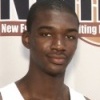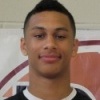Truth about Positions

Today’s day and age of college basketball recruiting has often been called the “age of entitlement” referring to the plethora of prospects who feel as if they deserve the quantities of travel, gear, and other permissible benefits they receive simply because of their natural ability.
That same attitude can also extend to the court, manifesting itself with regard to a player’s expectations about their starts, minutes, touches, and shots.
Perhaps the single greatest misconception most top prospects have about the next level is in regard to what position they’ll play. Almost to a tee, every five-man or center think he’s a four, every four-man thinks he’s a three or a wing, every wing thinks he’s a guard, and every two-guard thinks he can be a point guard.
Unfortunately reality rarely hits until they reach the next level, because most coaches are hesitant to tell prospects the cold, hard truth for risk that they’ll lose them.
Those prospects looking for an early dose of reality should take a look at some of their predecessors.
Noah Vonleh looks poised to crack Indiana’s starting line-up on opening night but based on head coach Tom Crean’s recent comments, he’s likely to be the team’s starting center, not power forward and certainly not small forward.
That’s not all that different from what Georges Niang experienced last season at Iowa State, when he had a terrific freshman season, albeit playing the five as much as he did the four.
It was no different at Michigan where Mitch McGary and Nik Stauskas started in the national championship game…at the center and small forward positions respectively
Notre Dame head coach Mike Brey recently said that Pat Connaughton will be used as a four-man at times this year, while Thomas Knight will see time almost exclusively at the five and Zach Auguste could play both four and five when he returns from injury.
The examples could literally go on and on, but far more important are the implications.
What does it mean if Vonleh, McGary, or Niang are playing the five?
Not much at all.
While it’s easy to get caught up in a number, the reality is that the game has evolved and positions don’t equate to the same traditional definitions that they once did. Vonleh, McGary, and Niang were all developed on the perimeter before they arrived at college, and there isn’t a coach in America (at least not a good one) that isn’t going to take advantage of a unique skill of one of his highly talented players.
Vonleh may be a five at Indiana, but Tom Crean will inevitably find ways for him to utilize his ability to handle the ball. Niang is a very good three-point shooter and gets opportunities to show it within Fred Hoiberg’s offense at Iowa State, just like McGary’s ability to pass the ball was capitalized within John Beilein’s system at Michigan last year.
Another misconception is that players who don’t play the same position in college as they may eventually in the NBA have a lesser chance of being drafted. That logic would suggest that McGary’s professional aspirations were hurt by his year at Michigan, but yet just the opposite was true, and he turned down a likely spot in the first round to return to college. The same can be said of Vonleh, who is currently projected as a lottery pick in 2015 by both DraftExpress.com and NBADraft.net.
In fact, what is far more common is prospects who play out of position in college or get fixated on proving how they’ve expanded their games, ultimately only end up becoming less effective and thus hurting their stock in the eyes of NBA scouts.
The moral of the story is this. If you’re a prospect going through the recruiting process, there’s no problem with asking what position you’ll play, but far more important is how you’ll be utilized and developed. A desire to expand your game is a great thing, but only if it’s complemented by an understanding of what your best strengths are. Do your own research, look into players who came before you, and make an informed decision.
Above all else though, understand that the people who are telling you the truth, even if it’s not necessarily what you want to hear, are the ones who care most about you and your future, whether it’s in regard to position or anything else.


 Mitch McGary
Mitch McGary
 Noah Vonleh
Noah Vonleh
 Georges Niang
Georges Niang
 Pat Connaughton
Pat Connaughton
 Zach Auguste
Zach Auguste
 Thomas Knight
Thomas Knight